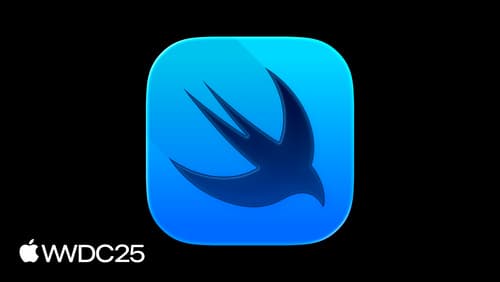what specific improvements did apple do to performance and speed in their platforms this year?
Asked on 2025-06-14
1 search
Apple has made several specific improvements to performance and speed across their platforms this year:
-
Apple Silicon: Apple continues to leverage the power and efficiency of Apple Silicon, which provides a strong foundation for performance improvements across all platforms. This includes unified memory, specialized accelerators for video and machine learning, and a secure enclave for system integrity. These features enable unprecedented power and efficiency, allowing apps to perform better and more efficiently (Platforms State of the Union).
-
SwiftUI Enhancements: There have been significant performance improvements in SwiftUI, particularly in handling lists and scrolling. On macOS, lists of over 100,000 items now load 6 times faster and update up to 16 times faster. Scrolling performance has also seen major improvements, enhancing the user experience across all platforms (What’s new in SwiftUI).
-
Core ML Improvements: Core ML has seen significant performance enhancements, particularly in on-device inference. The improvements in the inference stack mean that iOS 18 is faster across many models compared to iOS 17, without requiring recompilation or code changes (Deploy machine learning and AI models on-device with Core ML).
-
Xcode Enhancements: Xcode 16 introduces explicit modules, which improve build parallelism, diagnostics, and debugging speed. This results in faster builds and a more efficient development process (What’s new in Xcode 16).
-
Metal 4: The introduction of Metal 4 brings new features to support advanced graphics and machine learning technologies, such as neural rendering. This allows for more realistic graphics and improved performance in gaming and other graphics-intensive applications (Platforms State of the Union).
These improvements collectively enhance the performance and speed of applications across Apple's ecosystem, benefiting both developers and users.

Platforms State of the Union
Discover the newest advancements on Apple platforms.

What’s new in SwiftUI
Learn what’s new in SwiftUI to build great apps for any Apple platform. We’ll explore how to give your app a brand new look and feel with Liquid Glass. Discover how to boost performance with framework enhancements and new instruments, and integrate advanced capabilities like web content and rich text editing. We’ll also show you how SwiftUI is expanding to more places, including laying out views in three dimensions.

Deploy machine learning and AI models on-device with Core ML
Learn new ways to optimize speed and memory performance when you convert and run machine learning and AI models through Core ML. We’ll cover new options for model representations, performance insights, execution, and model stitching which can be used together to create compelling and private on-device experiences.
